Climate change has created less predictable precipitation and in many cases more intense precipitation events. This influx of water flow is a significant challenge for infrastructure planning, with and without geosynthetics. Here, Mojtaba Asadi, Soheil Nazarian, and Rajib Mallick use software to numerically model unsaturated flow within a conventional layered pavement in the aftermath of flood-related inundation. It’s research that has importance for road designs of all sorts. The version published here is based on the full paper in the GAP 2019 conference proceedings, which were published by Geosynthetica.
1. INTRODUCTION
As shown in Fig. 1, the number of severe flooding events and heavy rainfalls has increased in the recent past across the U.S. and around the world due to the climate change and global warming (EPA, 2016). The rehabilitation of the transportation infrastructure that have been damaged due to such extreme events requires billions of dollars. Pavement structures, in particular, are vulnerable to the two types of flooding, namely river and flash flooding. Sustained water within the pavement structure can adversely influence the bearing capacity of the pavement and can result in its premature failure. In the case of river flooding, which is accompanied by prolonged inundation, significant ingress of water into the pavement is almost inevitable. The detrimental effects due to the presence of water in pavement structures include the reduction of shear strength and resilient modulus of the soil layers, asphalt stripping in flexible pavements, pumping effect in rigid pavements, migration of fines into drainable layers, frost/heave and thawing in cold regions, and swelling in expansive soils (Huang, 2004). Premature pavement failures can impose unforeseen maintenance/rehabilitation costs to highway agencies. They also may result in serious safety hazards to the users.
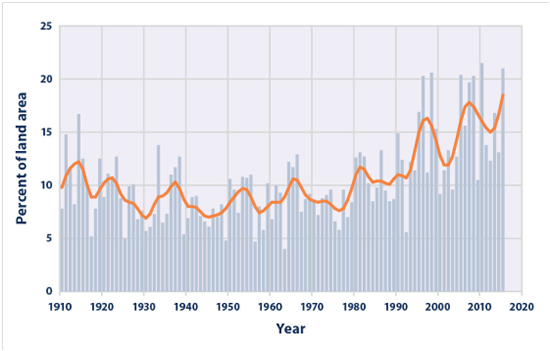
Several researchers have reported on the structural damage and premature failures of inundated pavements in the literature. For instance, Gaspard et al. (2007) investigated the influences of hurricanes Katrina and Rita on the transportation infrastructure of Louisiana. They tested several submerged pavement sections in on-going construction projects. They found pavements were damaged because the subgrade became very weak. They also reported that the damages were more severe in asphalt pavements compared to the concrete ones. Sultana et al. (2016) conducted a similar study in Queensland, Australia to assess the post-flood behavior of inundated flexible pavements. They performed Falling Weight Deflectometer (FWD) tests on flooded as well non-flooded sections to demonstrate the relative damage of pavements due to the submergence. They suggested to assess the structural damage of a flooded section in a form of performance model (i.e. structural number versus time). They proposed an empirical equation to estimate the reduction of the structural number of the flooded sections as suggested by Austroads (2010) to assess the immediate impacts of flooding on the pavements and the associated costs of future rehabilitation.
MORE FROM GAP: Evaluation of Geocell Reinforced Backfill for Airfield Pavement Repair
Unsaturated flow within a conventional layered pavement in the aftermath of flood-related inundation is numerically modeled in the current study. A brief overview of the theory of unsaturated flow is presented in section 2. Section 3 introduces the software and procedure utilized for modeling the post-flood internal flow. A parametric study on the impact of key parameters on the post-flood response of pavement is described is section 4. In addition, some recommendations are made based on the results of this section. The conclusions of the paper are included in section 5.
2. THEORETICAL BACKGROUND
The aggregate layers of pavements undergo continuous changes of degree of saturation as a result of the hydrological cycles, such precipitation, infiltration and evaporation, results in of granular layers above the free ground water table level. Although the granular base layer and its underlying natural subgrade soil experience some saturation periods, they should be generally regarded as partially saturated for more realistic analysis. The key characteristic of the material required for unsaturated flow analysis is the Soil Water Characteristic Curve (SWCC) which essentially expresses a measure of water content against soil’s negative pressure, or suction (Fredlund et al., 2012).
Empirical and semi-empirical equations have been proposed for SWCC (e.g. Brooks and Corey, 1964; and Van Genuchten, 1980; Fredlund and Xing, 1994). Leong and Rahardjo (1997) compared the most popular forms of SWCC and recommended the equation proposed by Fredlund and Xing (1994), which is:

where, qw is volumetric moisture content; qsat is saturated volumetric moisture content; a, b, c, and hr are fitting parameters.
The most robust theoretical framework for characterization of water movement in unsaturated zone is the partial differential equation of Richards. Owing to its sound physical basis, the Richards’ equation (RE) has been widely used in fundamental research and scenario analyses of water flow in variably saturated soil. Several numerical solutions have been proposed for the classical form of RE. However, the RE is difficult to solve because of its parabolic form and the nonlinearity of soil hydraulic functions. In addition, abrupt changes in moisture conditions near the soil surface cause steep wetting/drying fronts, posing convergence issues (van Dam and Feddes, 2000).
3. DEVELOPMENT OF MODEL
VS2DI software, developed by the US Geological Survey (USGS), can be used for modeling one- and two-dimensional flow in variably saturated media (Hsieh et al., 1999). VS2DI is a finite difference solution to the RE for water movement under various initial and boundary conditions. Characteristics relations between the moisture content, hydraulic heads and relative hydraulic conductivity may be represented by a number of predefined models or by tabular data points. VS2DI graphical user interface (GUI) consists of a preprocessor as well as a postprocessor. The preprocessor is used to define the model’s domain, hydraulic and transport properties, initial and boundary conditions, grid spacing, and other model specifications. Once all required data are given to the preprocessor, the simulation results are displayed for each time step through a simple animation representation by the postprocessor. Simulation results can be displayed as contours of pressure head, moisture content, saturation, velocity or flux.
Several researchers have successfully modeled the unsaturated flow in pavement layers using VS2DI. For instance, Stormont and Zhou (2005) used VS2DI to study the performance of a pavement system with edge drain subject to surface infiltration. They acknowledged the uncertainties associated with such a numerical analysis due to a lack of confidence on unsaturated hydraulic properties of the material. Yet, they observed that the numerical results were generally consistent with the field observations.
A three-layer pavement section consisted of 3-in. of HMA, 12-in. of unbound aggregate base and natural subgrade was modeled using VS2DI. The initial and boundary conditions should be adequately considered in order to realistically simulate the post-flood water regimen within the pavement layers. As the initial condition, the pavement layers were assumed to be fully saturated prior to the analysis. In addition, an initial elevation of water on top of the pavement, which was equivalent to initial heads, was considered as shown in Figure 2.
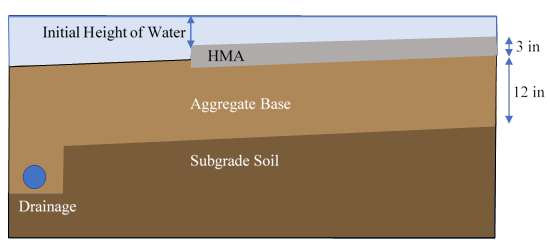
A number of material properties, such as porosity, SWCC, and saturated permeability (ksat), were required for that unsaturated analysis. Since direct measurement of some of these properties (e.g., SWCC) is difficult and expensive, available correlations can be utilized to estimate indirectly such properties based on more basic ones, e.g., gradation and plasticity. Zapata (1999) proposed correlations for the estimation of SWCC of coarse- and fine-grained geomaterials with regard to D60 and weighted plasticity (wPI), respectively. On the other hand, several equations have been proposed for estimation ksat. The equations adopted by AASHTO’s mechanistic empirical design guide, MEPDG, (ARA, 2004) for aggregate base materials is a function of D60 only. However, as Table 1 suggests, this equation may result in significant error of prediction when compared to measured values. The equation of Moulton (1980) expresses ksat as a function of effective diameter D10, fine percentage of the material (bP200), and porosity. This equation which makes relatively more reliable predictions was utilized for the parametric study explained in the following section.
MORE FROM GAP: Assessment of Historical Army Airfield Pavement Condition Data
4. SENSITIVITY ANALYSIS
This section presents the results of a parametric study on the post-flood hydraulic behavior of a pavement section (Fig. 2) analyzed using unsaturated flow principles. For each time step, the hydraulic response was represented by saturation profile, due to variations of one parameter when the other parameters are set to nominal (constant) values. Figure 3 shows the variations of degree of saturation for different gradations of the base material. The excess water dissipates more rapidly over time when the base is composed of coarser aggregates, i.e. greater D10, and less fines, i.e. lower P200. On the other hand, when the unbound aggregate material is considerably fine, i.e. D10<0.3 mm, the base layer remains over 90% saturated for several days, over 28 days in this case, after flooding. Consequently, the structural capacity of the base layer decreases due to reduction of its resilient modulus. This is synonymous with severer distresses and premature failure of the pavement.
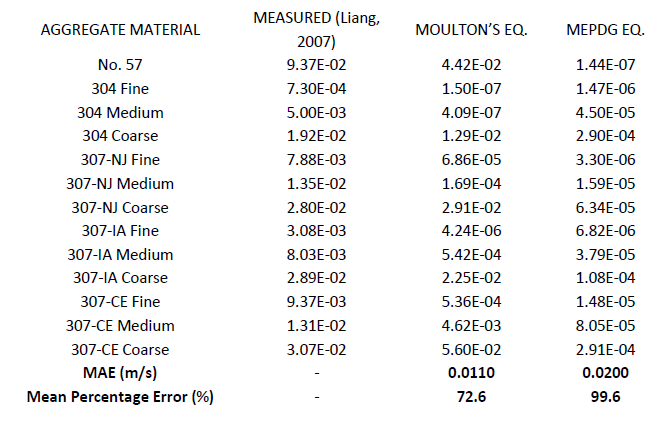
The impact of subgrade plasticity on the post flood behavior of the pavement, characterized as saturation of the base layer, is depicted in Figure 4. Although the base layer’s degree of saturation slightly changes for different plasticity of the subgrade, especially between days of 15 to 25, it is almost the same for different subgrade types at the end of the analysis. This may be attributed to the function of permeable base which makes the role of subgrade insignificant by providing a drainage path through the base layer. According to this observation, it is recommended to use permeable base when there is no control on the subgrade material, or it is of high plasticity, to minimize the distresses associated with post-flood over-saturation period.
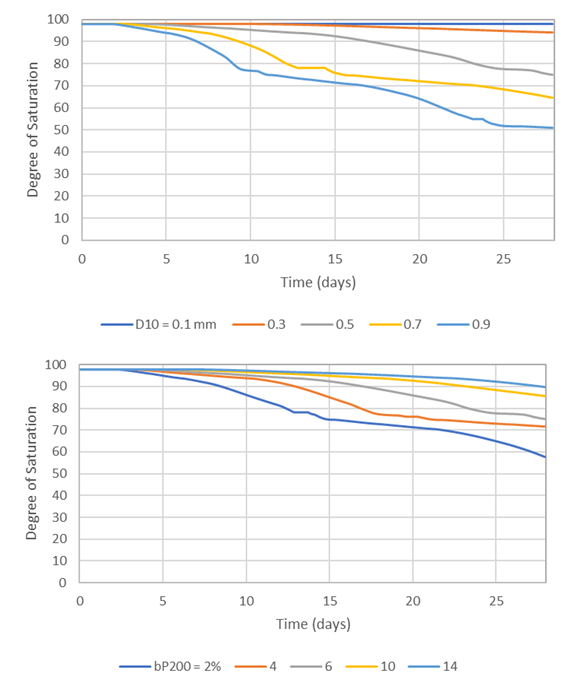
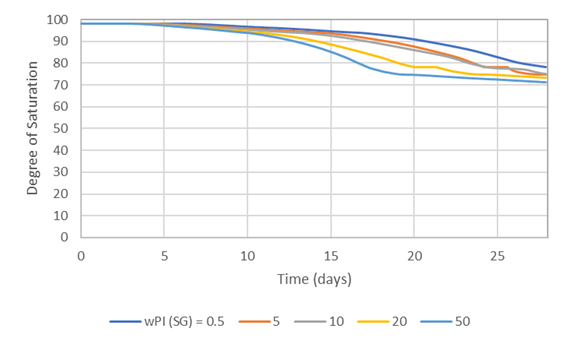
Figure 5 shows the variations of base layer’s degree of saturation for different initial heights of water on top of the pavement. The initial height of water seems to be the least significant parameter among those investigated herein. The influence of base layer’s permeability anisotropy on the post-flood variations of saturation is illustrated in Figure 6. More-compacted base layers (i.e. lower kv/kh) have higher levels of saturation over time, which in turn will result in higher structural damage. This finding is in line with the previous observations and highlights the importance of permeable base layers in post-flood response of pavement structures. This study suggests that consideration of additional measures of compaction may be necessary in order to meet permeability requirements for flood-resilient pavements especially in the areas with more frequent and heavy rainfalls.
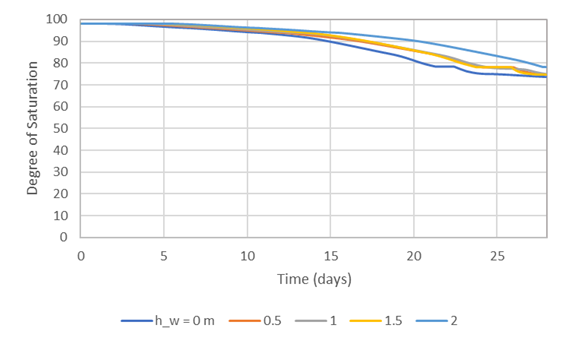
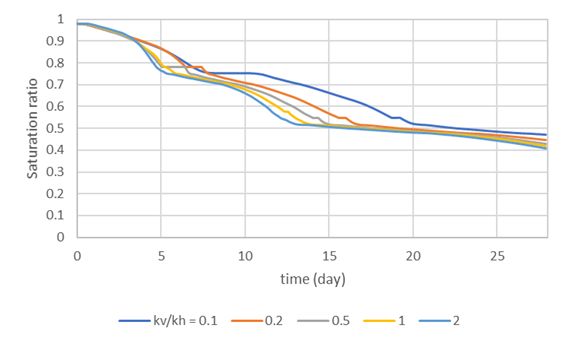
5. CONCLUSION
In this paper, post-flood hydraulic behavior of a flexible pavement with unbound aggregate base layer was studied by means of a freeware finite difference code. The pavement was modeled based on the principles of unsaturated flow in porous media for more realistic results. In addition, experimental correlations were utilized for estimation of required material properties. Subsequently, a parametric study was carried out to investigate the impact of key properties of the material, such as gradation and anisotropy, on the post-flood response. It is to be mentioned that severer distresses and even premature failure might occur if the granular layers, particularly the unbound aggregate base, undergo prolonged periods of high saturation. Accordingly, this study revealed that new measures, for instance for compaction control or base layer gradation, may be required to design and construct flood-resilient pavement structures.
Mojtaba Asadi and Soheil Nazarian and with the Center for Transportation Infrastructure Systems (CTIS) at the University of Texas at El Paso. Rajib B Mallick is with the Civil and Environmental Engineering Department, Worcester Polytechnic Institute.
REFERENCES
Applied Research Associates, Inc. (ARA) (2004). “Development of the 2002 Guide for the Design of New and Rehabilitated Pavement Structures.” Final Report and Software (version 0.70) NCHRP Project 1-37A, Transportation Research Board, Washington, D.C.
Austroads. (2010). Predicting structural deterioration of pavements at a network level – Interim models. AP–T159/10, Sydney, Australia.
Brooks, R., and Corey, T. (1964). “Hydraulic properties of porous medium.” Hydrology Papers, Colorado State University, 24.
Environmental Protection Agency (EPA) (2016). “Climate Change Indicators in the United States: Heavy Precipitation.” (www.epa.gov/climate-indicators) – Updated August 2016.
Fredlund, D.G., Xing, A., and Huang, S. (1994). “Predicting the permeability function for unsaturated soils using the soil-water characteristic curve.” Canadian Geotechnical Journal, 31(4), 533-546.
Fredlund, D.G., Rahardjo, H., and Fredlund, M.D. (2012). Unsaturated soil mechanics in engineering practice. John Wiley & Sons, Hoboken, NJ.
Gaspard, K., Martinez, M., Zhang, Z., and Wu, Z. (2007). “Impact of Hurricane Katrina on roadways in the New Orleans Area.” Technical Assistance Rep. No. 07-2TA, LTRC Pavement Research Group, Louisiana Dept. of Transportation and Development, Louisiana Transportation Research Center, LA.
Hsieh, P.A., Wingle, W.L., and Healy, R.W. (1999). “VS2DI-A graphical software package for simulating fluid flow and solute or energy transport in variably saturated porous media.” U.S. Geological Survey Water-Resources Invest. Rep. 99-4130.
Huang, Y.H. (2004). Pavement analysis and design. Prentice Hall, Englewood Cliffs, NJ.
Leong, E.C., and Rahardjo, H. (1997). “Review of soil-water characteristic curve equations.” Journal of Geotechnical and Geoenvironmental Engineering, 123(12), 1106-1117.
Liang, R.Y. (2007). Evaluation of Drainable Bases under Asphalt Pavements No. FHWA/OH-2007/10.
Moulton, L.K. (1980). Highway Subsurface Drainage. Report No. FHWA_TS_80-224, FHWA, US. Department of Transportation.
Stormont, J.C., and Zhou, S. (2005). “Impact of unsaturated flow on pavement edge drain performance.” Journal of transportation engineering, 131(1), 46-53.
Sultana, M., Chai, G., Martin, T., and Chowdhury, S. (2016). “Modeling the Post-flood Short-Term Behavior of Flexible Pavements.” Journal of Transportation Engineering, 142(10), 04016042.
Van Dam, J.C., and Feddes, R.A. (2000). “Numerical simulation of infiltration, evaporation and shallow groundwater levels with the Richards equation.” Journal of Hydrology, 233(1-4), 72-85.
Van Genuchten, M.T. (1980). “A closed-form equation for predicting the hydraulic conductivity of unsaturated soils.” Soil Science Society of America journal, 44(5), 892-898.
Zapata, C.E. (1999). “Uncertainty in Soil-Water-Characteristic Curve and Impacts on Unsaturated Shear Strength Predictions.” Ph.D. Dissertation, Arizona State University, Tempe, AZ.












